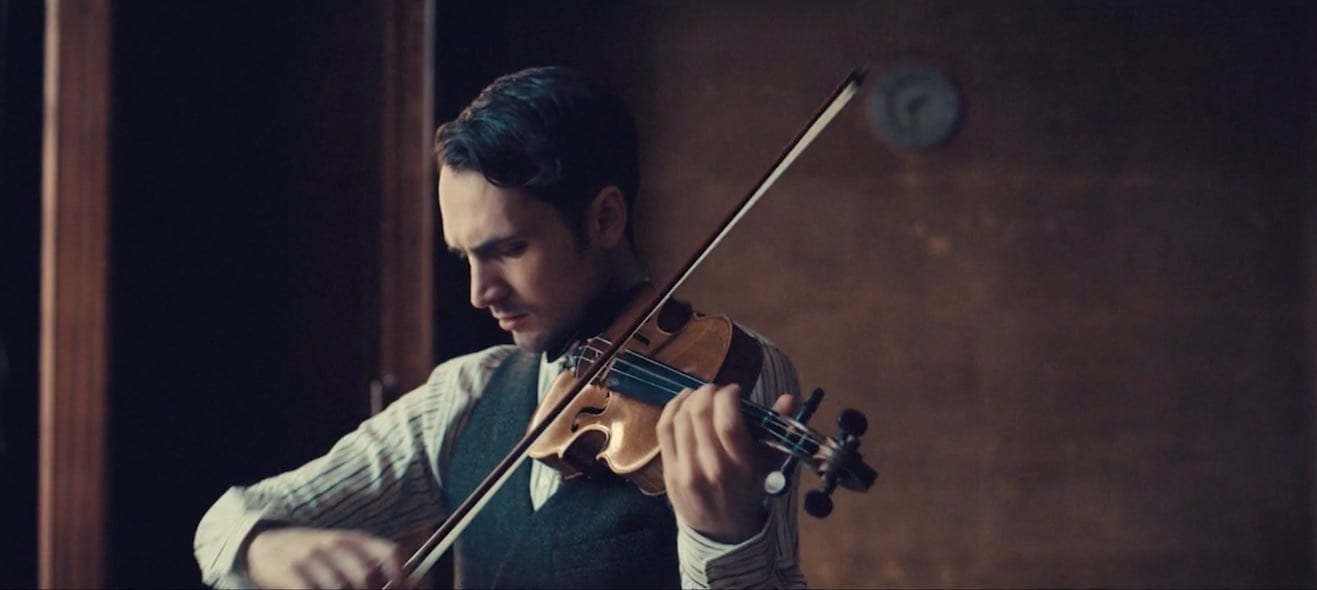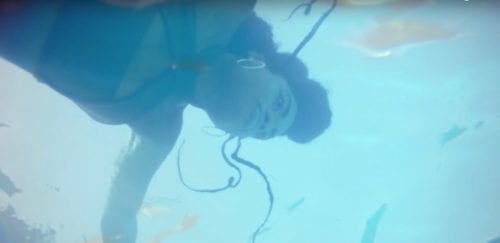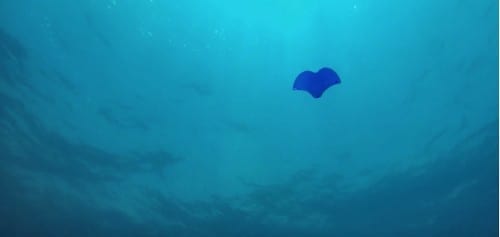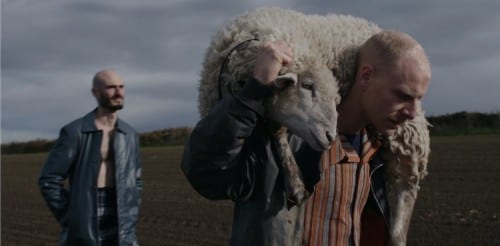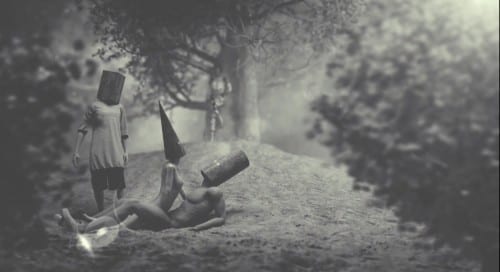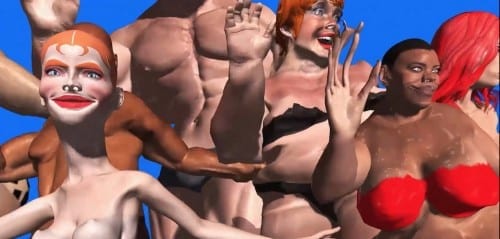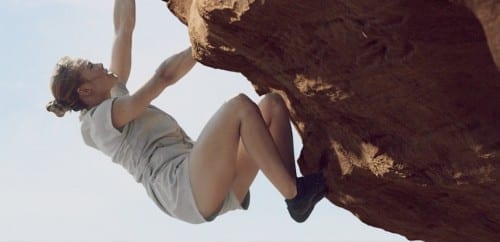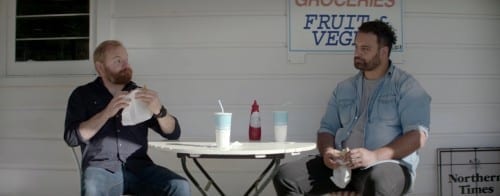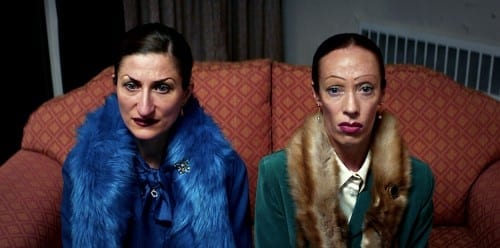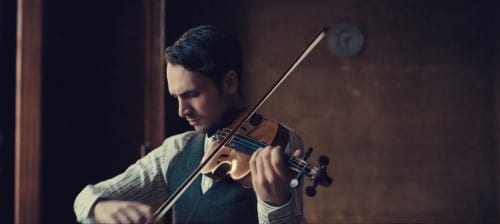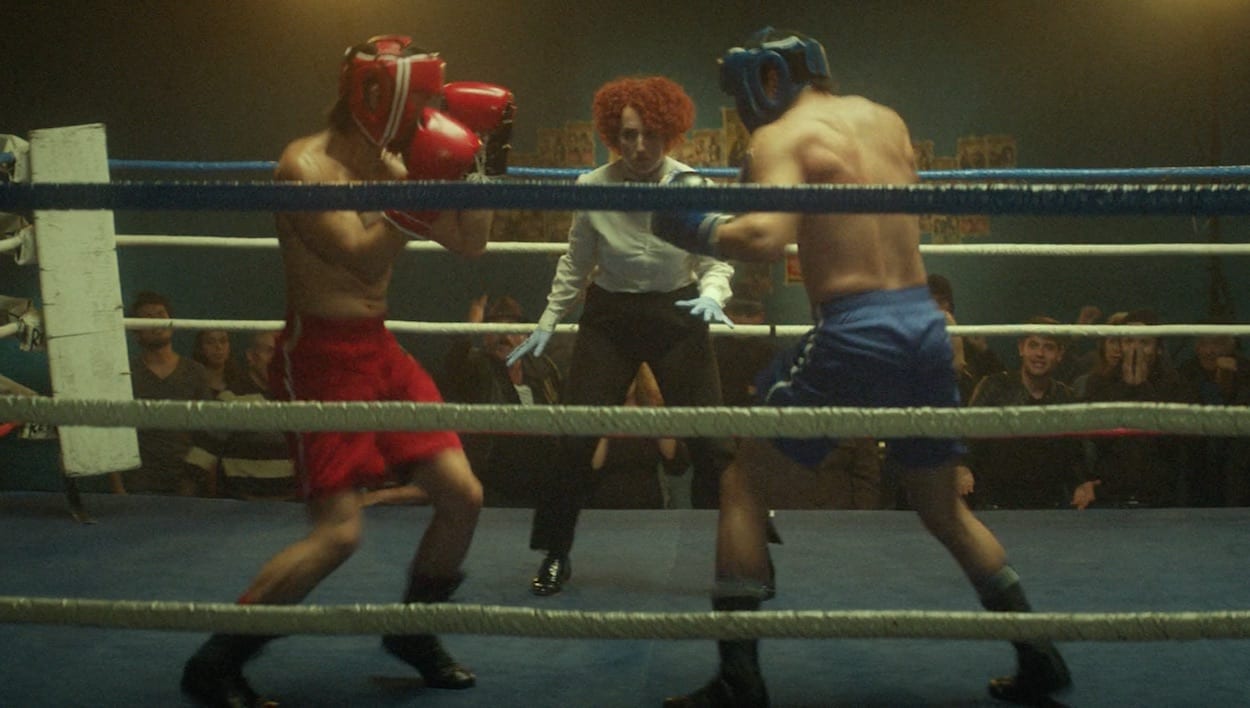Please talk us through your creative process of making this film. How did the idea for your narrative come about and how did it evolve during the filmmaking process?
I came up with the idea when watching a string quartet at Wilton’s music hall.
I was struck by the cellist, he was very unassuming and sat nearer the back but his expressions were utterly genuine and captivating. He brought a real vulnerability to the music. He wasn’t playing for us. He was completely involved in his music and it was wonderful to see. I imagined him alone in his own space, playing for the joy of playing. Not trying to impress or move others. But using his music as a way to soothe himself and to help deal with the mix of emotions he was feeling.
There was a moment when his bow was sawing away rapidly on the strings and his face was so mournful, despite the ferocious movement he was hacking at the cello.The hairs on his bow were snapping and flying up frayed at both ends of the bow. It looked like he was going to saw right through his bow. And it gave me the idea of the bow cutting right through his instrument instead.
I really loved the idea that the musician in my film was battling with a mix of emotions: a deep sorrow but also an anger that riddled up inside of him, finally getting the better of him and resulting in a furious hacking through the violin.
Finding the right location on the budget was quite hard, I wanted it to feel like a safe place, somewhere where our character could go to escape. I wanted the room to have an empty feeling. No furniture or belongings. And I wanted it to feel timeless.
I had always seen him enter in through a big heavy wooden door, struggling against the weather, but the location brought with it a delightful 1930’s modernist revolving door which remains one of my favourite shots.
Is the violin-playing a metaphor for his internal trauma?
Yes. I love visual metaphors and they are something that I play with a lot in my work.
I wanted to show music’s power to heal and help with a grieving process. Sometimes you just have to play, or listen to a bittersweet song and let yourself fall into a pit of despair, only to climb out the other side, fragile but moving on.
I like the idea that grief in people comes out in many different ways, some people needing to find someone to blame and feeling angry or feel they have been treated unfairly. I wanted there to be a struggle between the violinist’s emotions. We see this in the way he throws the violin case in a fit of rage at the beginning, before composing himself and playing the bittersweet tune. His composure breaking intermittently as he plays.
In the film the violinist is suddenly pulled out of his sorrowful state, when the bow finally cuts right through the violin. I wanted that moment to feel like that moment when you snapped back to reality and reflect on what just came over you. You realise you have been self absorbed in your misery and have let grief get the better of you. That feeling that perhaps letting yourself get so affected by sadness is self indulgent and a sign of weakness.
I like that the blood on the bow, at the end, is left ambiguous. It could be that the bow sliced through the last desperate splinters and cut into his arm, snapping him back to reality…or it could be symbolic of the bleeding of the violin.
Did the film change much in the edit – or did it keep to a shotslist / storyboard?
We did cut the music piece quite substantially. It was really difficult to know prior to the edit just how long the piece should be. In the edit the pace felt it needed to be a bit faster to the main action, with the violin breaking down, quicker than I had anticipated after a luxuriously slow intro section. I think we cut about 20 seconds off the middle of the track. It was a bit brutal for our composer and he wouldn’t let me go any further, but he now agrees makes for a better film.
Other than that it was pretty much spot on to the storyboard. The pace and timings of things moved around a bit but generally it stayed close to board.
It’s beautifully shot and lit. Did you choose the location because of the framing you had in mind?
Yes, I had a very strong vision of how the shots should be.
I wanted a classical building, with grandeur, but an emptiness and sparseness also.
It was important to me to see him moving through the building at the opening of the film. Architectural details such as the art deco lighting and balustrades really sold this location to me, along with the wood paneling and and grand windows. Ben Fordesman did a wonderful job with lighting and shooting this film.
How did you go about casting the lead?
We wanted to cast an actual violinist. This wasn’t going to be a piece that we could get someone inexperienced to mime to, and we didn’t want bad playing to dictate the edit. It would have been a nightmare cutting around hands and arms that didn’t know what they were doing.
But finding a violist who looked right and had some acting skills was also quite challenging.
It was one of the nicest castings I’ve attended: listening to one beautiful piece after another. We heard some extremely talented musicians that day, but also saw lots of questionable acting.
Tobie, the musician we ended up casting, had no previous acting experience but he knew the piece he chose for the casting inside out, you could see the emotions on his face as he played. We had chosen the location before the casting so I knew the 30’s look that I wanted to capture, and he looked right in that environment and time. He also responded very well to direction.
And was it challenging directing his performance?
This was Tobie’s first time acting and he was wonderful.
He was very natural on camera, and wasn’t phased by being in the spotlight. I did a bit of workshopping with him before and he got into the character very easily.
Tobie had learned the piece, composed by the brilliant Joss Holden-Rea, by heart, and you could really tell by his performance. This made the edit much easier.
Tobie was also exceptional when you consider he had a ton of ‘cry stick’ in his eyes and that the dust billowing out of the violin was getting stuck to it. He was utterly professional in quite testing circumstances.
Anything else you’d like to share?
My favourite shots in this film are the ones from the inside of the violin. In reality we used a cello to get a bigger sense of depth and a wider perspective. The way the sound resonates around the inside of the violin on these shots is a little moment of magic created by the wonderful Martin Leitner at Wave.
Finding cheap broken violins on Ebay was easy. But what was difficult was finding replicas for an antique looking violin. The cheap ones stood out so much with their orange lacquered surface, and soft white looking wood. Even when treated you could tell it was a new cheap wood.
I had always imagined the violin splintering like a brittle hard wood. That the bow would be caught on and vibrate as it buckled over the splinters, so in theory it could still be possible to make some sounds out of the violin as it is getting cut in half.
Finding a violin that we could afford to cut in half, that didn’t look cheap was a challenge. I got very lucky on Ebay and was sold a very old violin that had lost its label and so there was no way to value it.
But we only had one violin double for the cutting shots, so planning the shot list was very precise. We didn’t really have any second chances. Once the violin was cut it was cut.
I also want to give a massive thank you to an exceptional producer Sophie Dewey, who, among other things, worked above and beyond helping me source violins and conducting tests with them.
Links:
